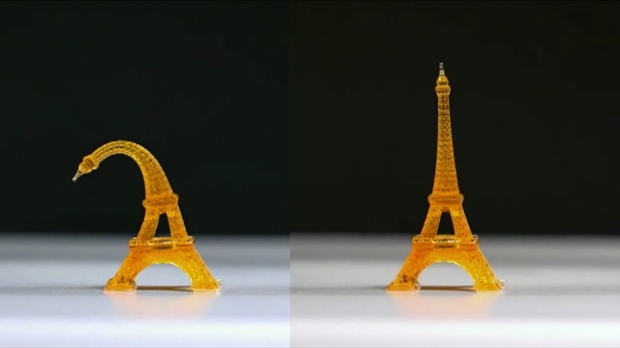Marc del Pozo Puig of the Eindhoven University of Technology (TU/e) has created a new 'smart ink' for use in 4D printing.
4D printing uses 3D printing to create objects capable of rearranging themselves in response to environmental stimuli. Given that they change with time, the fourth dimension in 4D printing is time. Printing with a material that changes in response to its environment has been done before to create some objects that can grow or shrink, open and close or twist.
To reverse these changes, the objects needed to be placed underwater. The new ink developed by del Pozo will make reversible change possible in normal conditions. The ink itself is made with liquid crystals instead of the previously used shape-memory polymers or hydrogels. Shape-memory polymers cannot reverse their form changes, and hydrogels can only reverse their changes underwater.
"What we didn't yet have was a more flexible material, capable of reversing its shape-shifting in various environments in response to stimuli. Now, we can adapt liquid crystals in multiple ways. We can play with not only the chemical composition but also the molecular arrangement," said del Pozo.
"Thus, materials can be designed that are responsive to humidity or temperature and whose movement can be controlled with great precision. And by combining materials with different functionalities, printed objects can be organized to form a communicating system," del Pozo continued.
The ink is also light-sensitive, which provides numerous possible applications for the technology in combination with the other stimuli. del Pozo envisions the potential for soft robots and medical applications such as printable artificial eyes, where the iris could change diameter in response to light changes.



